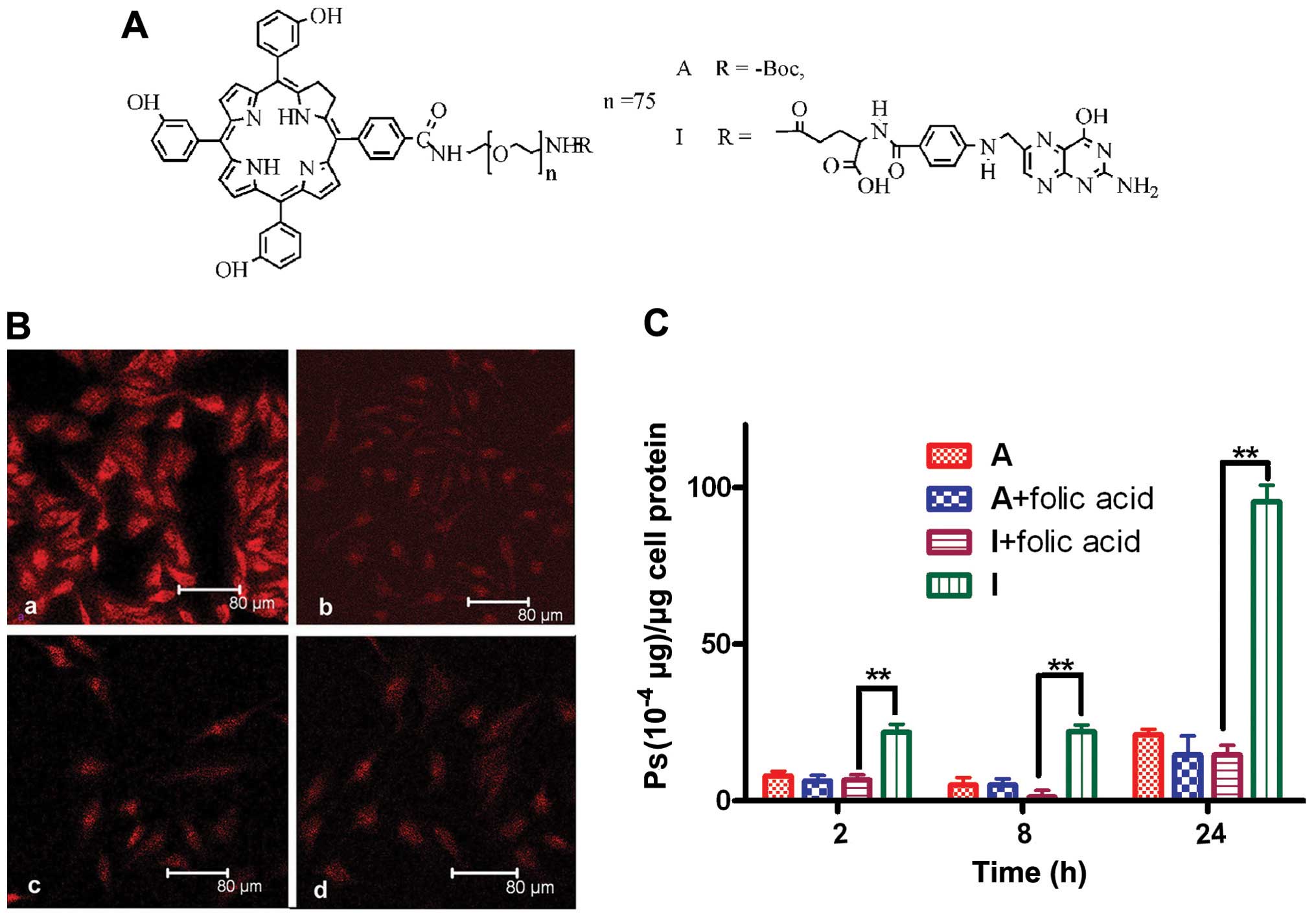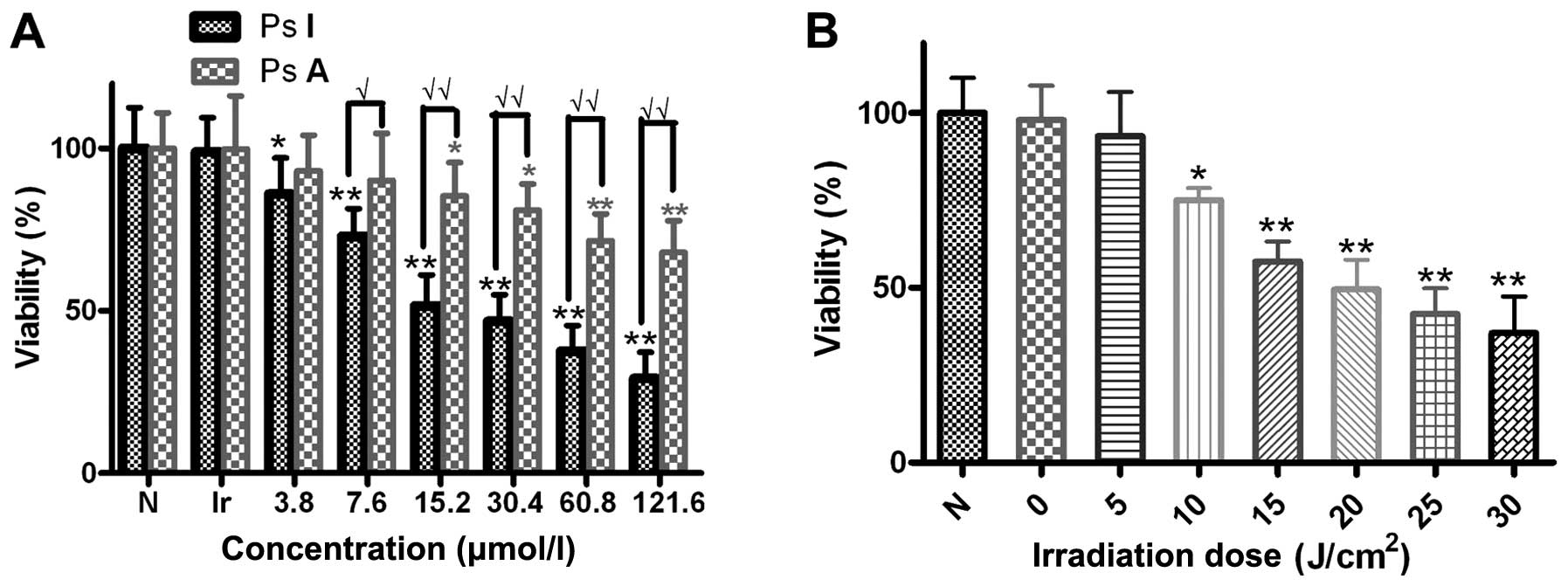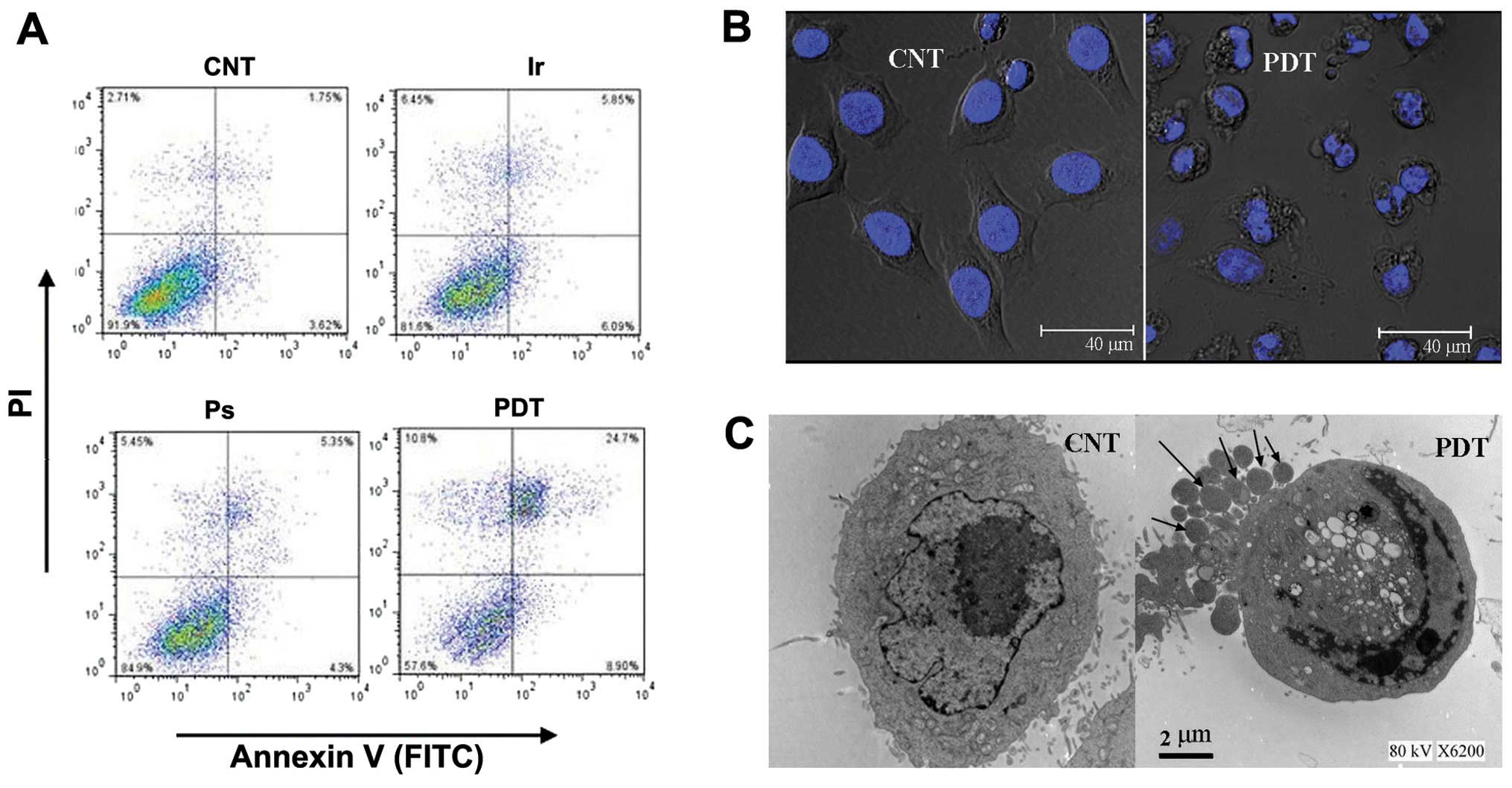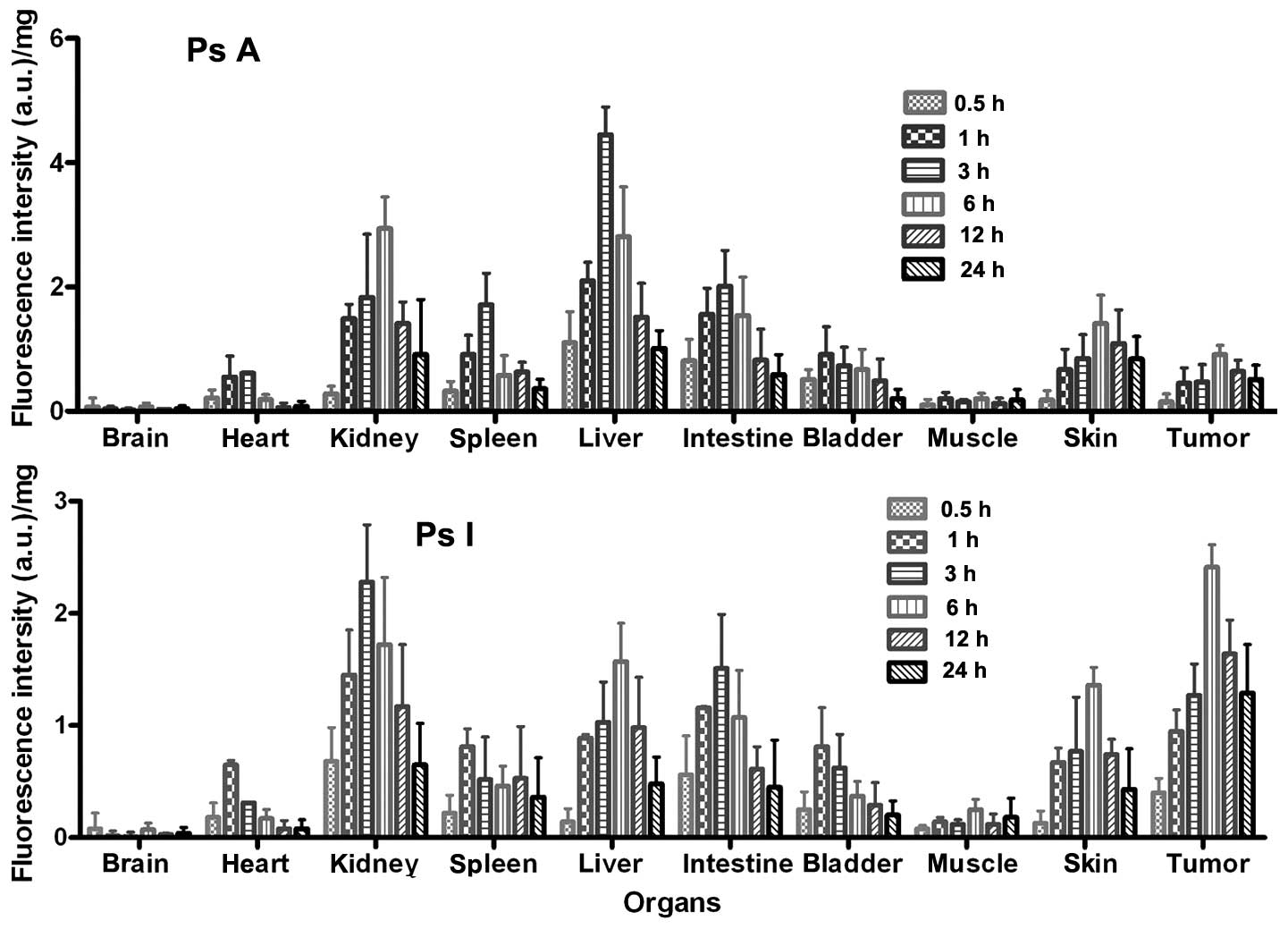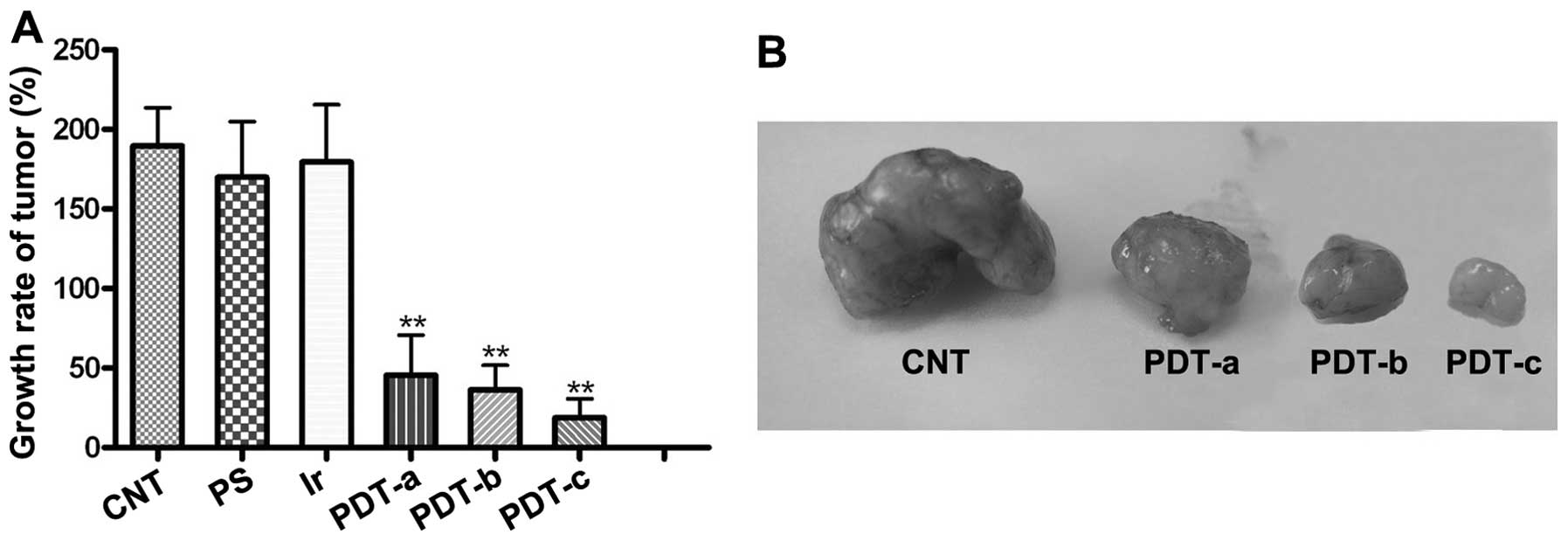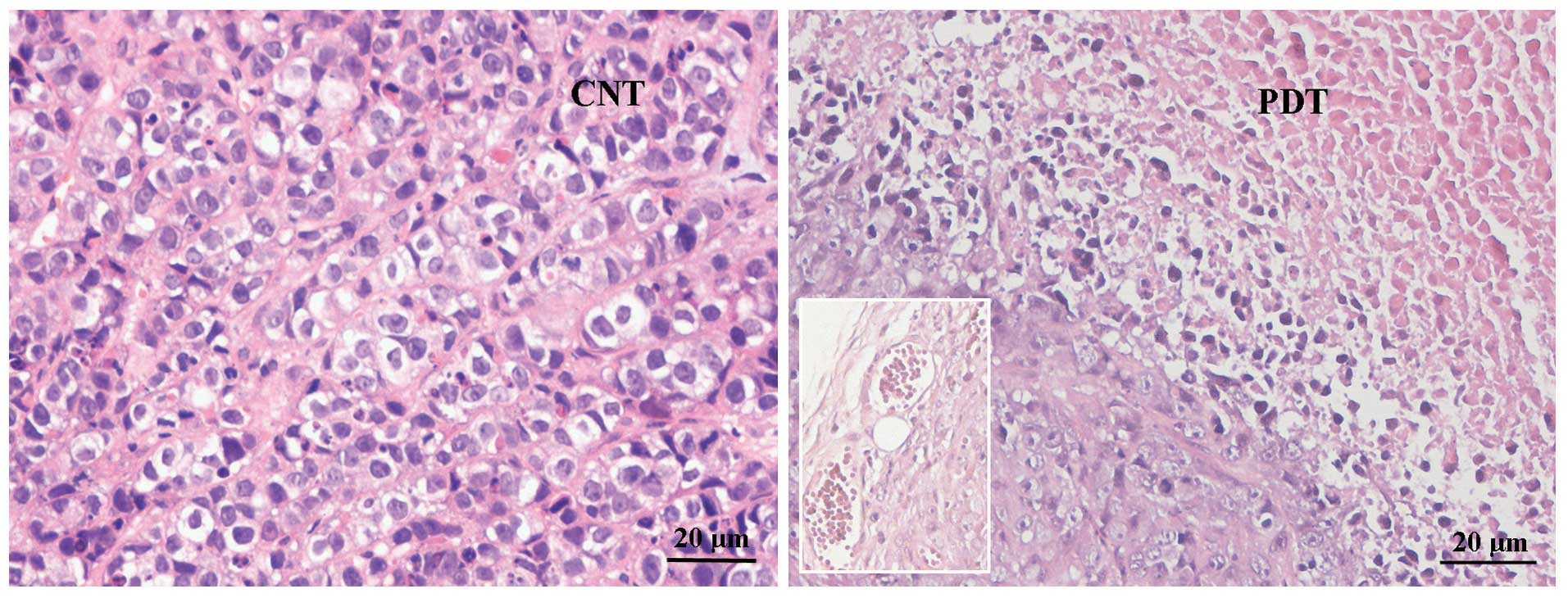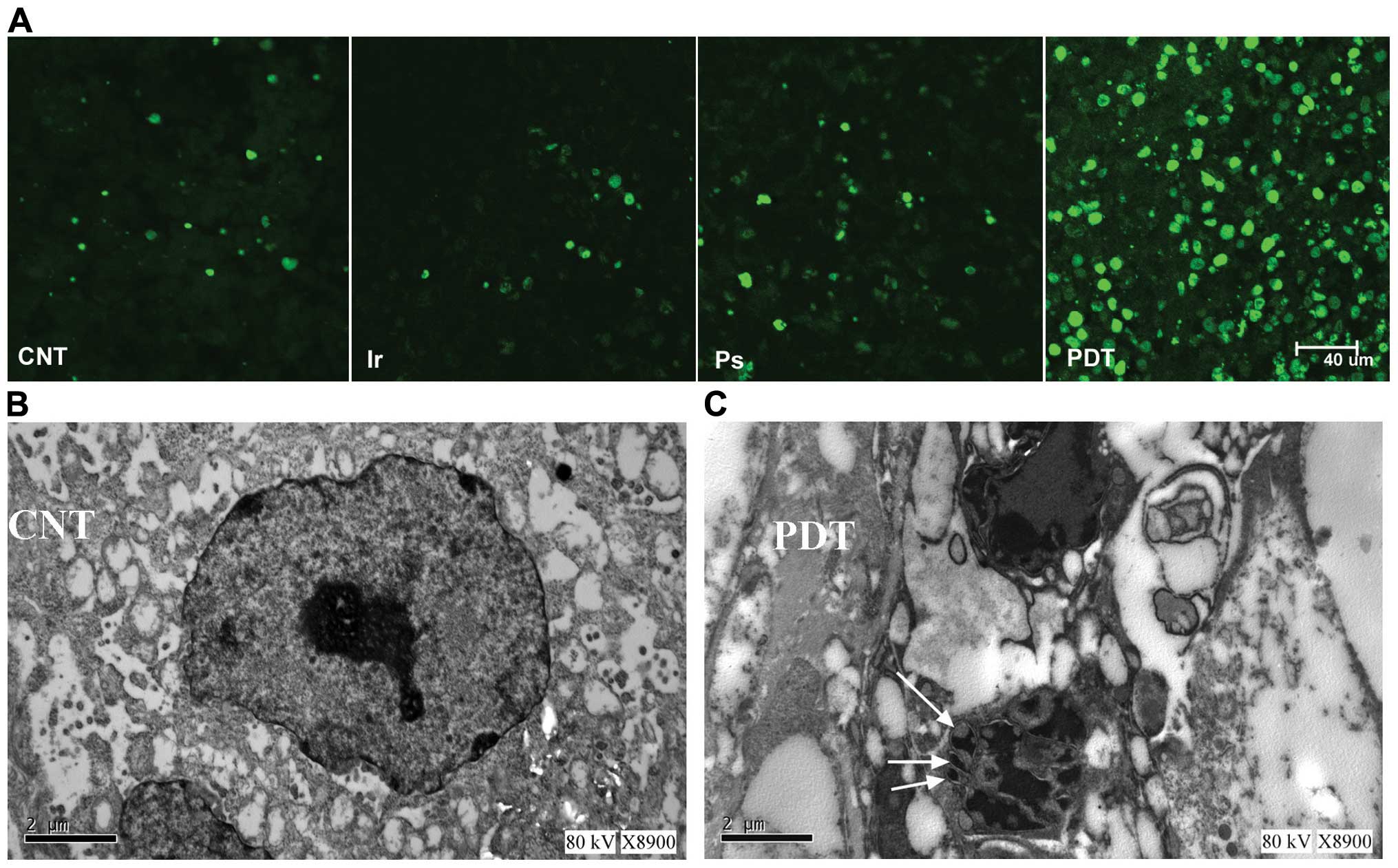|
1
|
Downs LS, Smith JS, Scarinci I, Flowers L
and Parham G: The disparity of cervical cancer in diverse
populations. Gynecol Oncol. 109:22–30. 2008. View Article : Google Scholar
|
|
2
|
Wells SF: Cervical cancer: an overview
with suggested practice and policy goals. Medsurg Nurs. 17:43–50.
2008.PubMed/NCBI
|
|
3
|
He GF, Bian ML, Zhao YW, Xiang Q, Li HY
and Xiao C: A study on the mechanism of 5-aminolevulinic acid
photodynamic therapy in vitro and in vivo in cervical cancer. Oncol
Rep. 21:861–868. 2009.PubMed/NCBI
|
|
4
|
Fayter D, Corbett M, Heirs M, Fox D and
Eastwood A: A systematic review of photodynamic therapy in the
treatment of pre-cancerous skin conditions, Barrett’s oesophagus
and cancers of the biliary tract, brain, head and neck, lung,
oesophagus and skin. Health Technol Asses. 14:1–288. 2010.
|
|
5
|
Benov L: Photodynamic therapy: current
status and future directions. Med Princ Pract. May 10–2014.(Epub
ahead of print). View Article : Google Scholar : PubMed/NCBI
|
|
6
|
Syu WJ, Yu HP, Hsu CY, et al: Improved
photodynamic cancer treatment by folate conjugated polymeric
micelles in a KB xeno-grafted animal model. Small. 8:2060–2069.
2012. View Article : Google Scholar : PubMed/NCBI
|
|
7
|
Dabrowski JM, Arnaut LG, Pereira MM,
Monteiro CJ, Urbanska K, Simoes S and Stochel G: New halogenated
water-soluble chlorin and bacteriochlorin as photostable PDT
sensitizers: synthesis, spectroscopy, photophysics, and in vitro
photosensitizing efficacy. Chem Med Chem. 5:1770–1780. 2010.
View Article : Google Scholar
|
|
8
|
Eshghi H, Sazgarnia MSc A, Rahimizadeh M,
Attaran N, Bakavoli M and Soudmand S: Protoporphydin IX-gold
nanoparticle conjugates as an efficient photosensitizer in cervial
cancer therapy. Photodiagnosis Photodyn Ther. 10:304–312. 2013.
View Article : Google Scholar : PubMed/NCBI
|
|
9
|
Shupin-Mrugalska P, Piskorz J, Goslinski
T, Mielcarek J, Konopka K and Düzgüneş N: Current status of
liposomal porphyrinoid photosensitizers. Drug Discov Today.
18:776–784. 2013. View Article : Google Scholar
|
|
10
|
Gijsens A, Missiaen L, Merlevede W and de
Witte P: Epidermal growth factor-mediated targeting of chlorin e6
selectively potentiates its photodynamic activity. Cancer Res.
60:2197–2202. 2000.PubMed/NCBI
|
|
11
|
Stefflova K, Li H, Chen J and Zheng G:
Peptide-based pharmaco-modulation of a cancer-targeted optical
imaging and photodynamic therapy agent. Bioconjug Chem. 18:379–388.
2007. View Article : Google Scholar : PubMed/NCBI
|
|
12
|
Vrouenraets MB, Visser GWM, Loup C, et al:
Targeting of a hydrophilic photosensitizer by use of internalizing
monoclonal antibodies: A new possibility for use in photodynamic
therapy. Int J Cancer. 88:108–114. 2000. View Article : Google Scholar : PubMed/NCBI
|
|
13
|
McCarthy JR, Bhaumik J, Merbouh N and
Weissleder R: High-yielding syntheses of hydrophilic, conjugatable
chlorins and bacteriochlorins. Org Biomol Chem. 7:3430–3436. 2009.
View Article : Google Scholar : PubMed/NCBI
|
|
14
|
Vlahov IR and Leamon CP: Engineering
folate-drug conjugates to target cancer: from chemistry to clinic.
Bioconjug Chem. 23:1357–1369. 2012. View Article : Google Scholar : PubMed/NCBI
|
|
15
|
Bugaj AM: Targeted photodynamic therapy -
a promising strategy of tumor treatment. Photochem Photobiol Sci.
10:1097–1109. 2011. View Article : Google Scholar : PubMed/NCBI
|
|
16
|
Leung WN, Sun X, Mak NK and Yow CM:
Photodynamic effects of mTHPC on human colon adenocarcinoma cells:
photo-cytotoxicity, subcellular localization and apoptosis.
Photochem Photobiol. 75:406–411. 2002. View Article : Google Scholar : PubMed/NCBI
|
|
17
|
Wang L, Li M and Zhang N: Folate-targeted
docetaxel-lipid-based-nanosuspensions for active-targeted cancer
therapy. Int J Nanomedicine. 7:3281–3294. 2012.PubMed/NCBI
|
|
18
|
Li D, LI P, Lin H, Jiang Z, Guo L and Li
B: A novel chlorin-PEG-folate conjugate with higher water
solubility, lower cytotoxicity, better tumor targeting and
photodynamic activity. J Photochem Photobiol B. 127:28–37. 2013.
View Article : Google Scholar : PubMed/NCBI
|
|
19
|
Vaidya A, Sun Y, Feng Y, Emerson L, Jeong
EK and Lu ZR: Contrast-enhanced MRI-guided photodynamic cancer
therapy with a pegylated bifunctional polymer conjugate. Pharm Res.
25:2002–2011. 2008. View Article : Google Scholar : PubMed/NCBI
|
|
20
|
Chin WWL, Heng PWS, Thong PSP, et al:
Improved formulation of photosensitizer chlorin e6
polyvinylpyrrolidone for fluorescence diagnostic imaging and
photodynamic therapy of human cancer. Eur J Pharm Biopharm.
69:1083–1093. 2008. View Article : Google Scholar : PubMed/NCBI
|
|
21
|
Gui T, Wang Y, Mao Y, Liu J, Sun S, Cao D,
Yang J and Shen K: Comparisons of 5-aminolevulinic acid
photodynamic therapy and after-loading radiotherapy in vivo in
cervical cancer. Clin Transl Oncol. 15:434–442. 2013. View Article : Google Scholar
|
|
22
|
Hiorth M, Liereng L, Reinertsen R and Tho
I: Formulation of bioadhesive hexylaminolevulinate pellets intended
for photo-dynamic therapy in treatment of cervical cancer. Int J
Pharm. 441:544–554. 2013. View Article : Google Scholar
|
|
23
|
Saul JM, Annapragada A, Natarajan JV and
Bellamkonda RV: Controlled targeting of liposomal doxorubicin via
the folate receptor in vitro. J Control Release. 92:49–67. 2003.
View Article : Google Scholar : PubMed/NCBI
|
|
24
|
Westermann P, Glanzmann T, Andrejevic S,
et al: Long circulating half-life and high tumor selectivity of the
photosensitizer meta-tetrahydroxyphenylchlorin conjugated to
polyethylene glycol in nude mice grafted with a human colon
carcinoma. Int J Cancer. 76:842–850. 1998. View Article : Google Scholar
|
|
25
|
Evensen JF, Moan J, Hindar A and Sommer S:
Tissue distribution of 3H-hematoporphyrin derivative and
its main components, 67Ga- and 131I-albumin
in mice bearing Lewis lung carcinoma. Prog Clin Biol Res.
170:541–562. 1984.
|
|
26
|
Leamon CP and Reddy JA: Folate-targeted
chemotherapy. Adv Drug Deliv Rev. 56:1127–1141. 2004. View Article : Google Scholar : PubMed/NCBI
|
|
27
|
Zhang JL, Deng L, Yao JZ, et al: Synthesis
and photobiological study of a novel chlorin photosensitizer
BCPD-18MA for photo-dynamic therapy. Bioorg Med Chem. 19:5520–5528.
2011. View Article : Google Scholar : PubMed/NCBI
|



